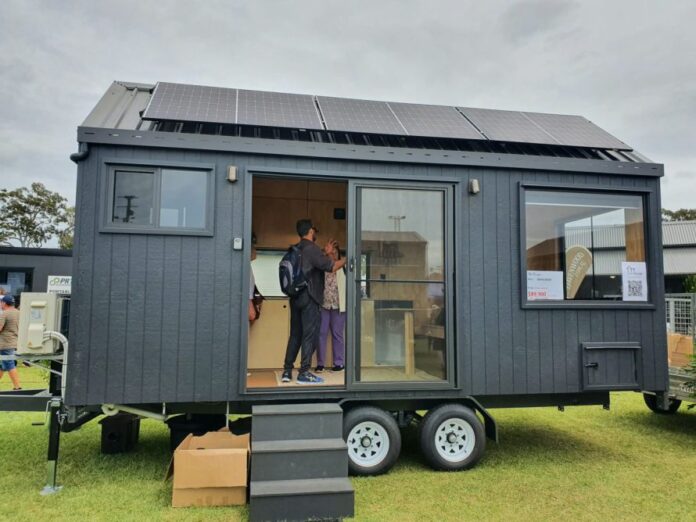Australia is renowned for its stunning coastal cities and idyllic hinterlands that attract tourists, retirees, and surf-loving sea-changers. However, beneath this picturesque façade lies a pressing issue—the reality of a burgeoning housing crisis. The early morning sights at crowded parking lots, where cars, vans, and even tents become temporary homes for many, starkly contrast with Australia’s reputation as a land of opportunity and comfort. This article delves into the complexities of this crisis, shedding light on the lives of those affected and potential solutions being explored.
The Faces of Homelessness
As dawn breaks in Australian coastal towns, an alarming number of individuals and families are discovered making breakfast in car parks, equipped with makeshift kitchens and using public showers. Contrary to common stereotypes of homelessness, many of these unhoused individuals hold jobs, have children in school, and are not battling severe physical or mental health issues. Yet, they find themselves on the streets simply because affordable housing options are disappearing, often shoved out by soaring rental costs and a stubbornly competitive property market.
The stark reality of this crisis is that it is not confined to the major cities; it has now spread to regional areas, where families are forced to adapt to an environment that offers few affordable places to call home.
Rising Housing Stress: The New Normal
The rising expenses of renting and the increasing challenge of homeownership are forcing Australians to think outside conventional housing models. As noted by the Cities Research Institute at Griffith University, many local governments are beginning to embrace alternative housing solutions, such as tiny homes or modular living spaces. These compact dwellings are increasingly being seen as viable options for those struggling to find traditional accommodations.
Almost all respondents from their recent survey identified affordability as a significant challenge for both renters and buyers. Despite a public perception that councils oppose alternative living arrangements, the reality is shifting. Increasingly, councils are approving modular homes, shipping container residences, and tiny houses on wheels as potential solutions to housing shortages.
Legal Compliance: A Necessary Concern
While enthusiasm for alternative living solutions is on the rise, adhering to local regulations remains paramount. Local councils, particularly in New South Wales and Queensland, have varying degrees of approval for alternative housing types, provided that they comply with existing laws and regulations concerning residential properties. Planners emphasize the necessity for these structures to be connected to essential services and to maintain local amenity.
One NSW planner encapsulated the prevailing sentiment: “We will have to think differently about how we live, given housing affordability and sustainability challenges.” This shift in mindset could potentially usher in more leniency regarding temporary and alternative housing solutions.
Challenges and Concerns Surrounding Tiny Homes
Despite the growing interest in tiny homes, concerns persist about the industry’s representation and marketing. Some participants in the Cities Research Institute survey expressed apprehension regarding misleading claims about the compliance of tiny houses with local laws, particularly concerning waste management, environmental health, and building codes.
For example, many tiny houses do not meet the minimum ceiling height mandated by the National Construction Code. Without proper certification and inspection processes, there is a significant risk that these structures may not only be illegal but also hazardous.
Innovating for the Future: A Quest for Acceptable Solutions
The tiny house movement, while facing scrutiny, underscores an essential conversation about the future of housing in Australia. Advocating for alternative living solutions allows individuals to rethink not only their living arrangements but also how they engage with their communities. By concentrating on good design, adaptability, and affordability, tiny homes could become more appealing to the general public.
Importantly, these homes can be rapidly deployed in emergencies, offering crucial support for areas affected by natural disasters. Their compact size also facilitates increased density in urban environments without overwhelming existing infrastructure, potentially creating vibrant new communities.
Conclusion: The Need for New Approaches
As traditional housing strategies struggle to address the nuanced challenges within Australia’s housing market, unconventional options such as tiny homes present an opportunity for innovative solutions. The consensus among planners is promising: there is a willingness to experiment with new strategies and enhance regulations surrounding alternative housing.
In conclusion, Australia’s housing crisis calls for creative solutions that embrace diversity and flexibility in living arrangements. Embracing tiny houses and alternative dwellings could likely contribute to alleviating housing stress and foster a renewed sense of community and belonging. As evidenced by the ongoing discussion, the journey towards a more inclusive housing future is only just beginning, and the potential for change hinges on collaboration, adaptation, and resilience.














